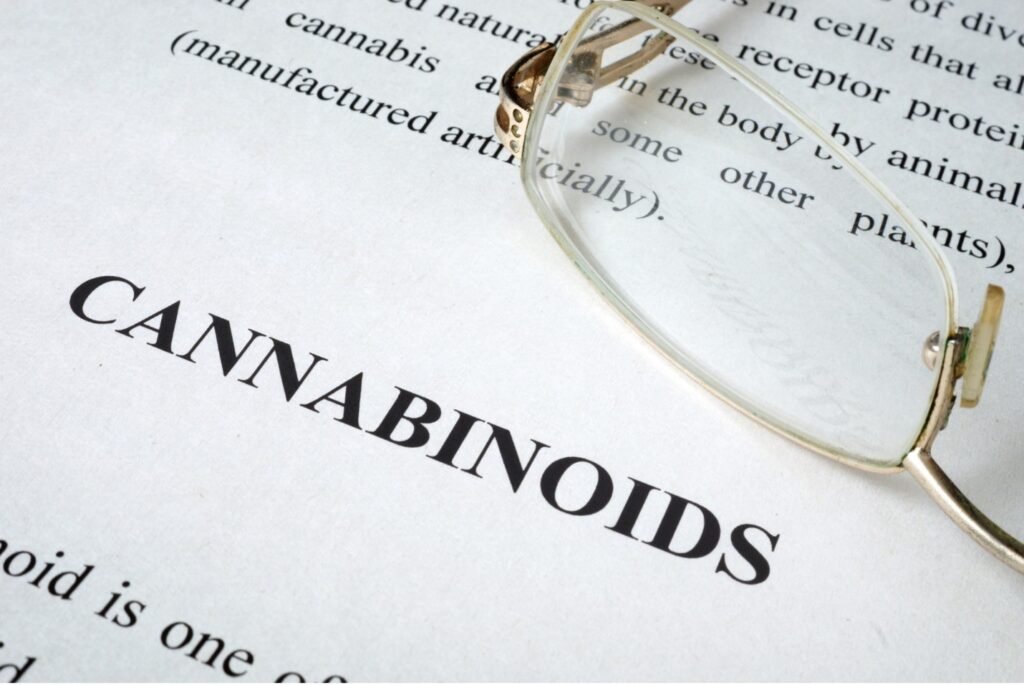
Public perception of cannabis has changed radically over the last several decades. For this reason, many people have been increasingly interested in this plant in a way that they hadn’t been before.
Everywhere you look these days there is discussion about the medical benefits of cannabis and cannabinoids like CBD. However, there is a lot more to marijuana than the most well-known cannabinoids of THC and CBD.
What are cannabinoids, exactly? Why do cannabis plants produce them and how do they interact with the body?
We will take a look at the answers to these questions and more in the article that follows.
What Are Cannabinoids?
Cannabinoids are chemical compounds that are found in marijuana.
The most well-known cannabinoid is tetrahydrocannabinol (THC). This is the primary psychoactive compound in the plant. This means that THC is primarily responsible for the “high” that is commonly associated with cannabis.
Another major cannabinoid is cannabidiol (CBD).
There are more than 100 different cannabinoids that have been isolated from cannabis so far. Each of them exhibit a variety of effects on the body. All in all, there are more than 480 different compounds that are present in the cannabis plant.
Cannabinoids are also found in the human body, which are referred to as endocannabinoids. When cannabinoids are produced by the cannabis plant, they are known as phytocannabinoids. Both of these bond to the same receptors that exist throughout the body and within the brain.
Every strain of cannabis won’t necessarily have every type of cannabinoid. If they do exist in a strain, they might occur in such trace amounts that lab testing cannot detect their presence.
The health benefits of cannabis have been attributed to the actions of cannabinoids in the body. This is due to the fact that they activate the CB1 and CB2 receptors in a person’s body and brain.
Both cannabinoids and terpenes develop in the trichomes, or resin glands, on the leaves and the flower of a cannabis plants. While other plants are also known to produce cannabinoids, they exist in the highest concentration in cannabis and hemp. The particular flavor and effects of any given strain are created by the combination of cannabinoids and terpenes.
These different terpenes and cannabinoids interact in a synergistic manner. This amplifies the benefits of each of the individual components in the plant.
Classes of Cannabinoids
There are a number of subclasses that cannabinoids are divided into. These are:
- Tetrahydrocannabinol (THC)
- Cannbidiol (CBD)
- Cannabigerol (CBG)
- Cannabinol (CBN)
- Cannabinodiol (CBDL)
- Cannabichromene (CBC)
- Other types of cannabinoids include cannabielsoin (CBE), cannabicyclol (CBL), and cannbitriol (CBT).
As you can see, the world of cannabinoids is far more complicated than simply THC and CBD. Let’s take a deeper look into the types of cannabinoids.
Health Benefits of Cannabinoids
Humans have been using cannabinoids for medicinal purposes for thousands of years. Different religions and cultures around the world have utilized cannabis. They have done so as a form of medical treatment and for other purposes.
Unfortunately, cannabis is still legal at the federal level. This is despite the potential health benefits of cannabinoids.
An interesting fact is that a patent for the medical properties of cannabinoids is actually owned by the US government, which was issued in 2003. It is titled “Cannabinoids as antioxidants and neuroprotectants.”
We are in a strange time when it comes to recognizing the health benefits of cannabinoids.
It has been publicly acknowledged by multiple government agencies that there are benefits to cannabis. However, it is still considered a Schedule I substance at the federal level. At the same time, numerous states have legalized marijuana for both recreational and medicinal purposes.
There is a new theory that has been developed known as Clinical Endocannabinoid Deficiency. The idea behind this theory is that illness exists when our bodies lack the correct amount of endocannabinoids. It is possible that the cannabinoids found in cannabis might be able to help our bodies recover by mimicking our naturally produced endocannabinoids.
There is still a lot to be learned about the potential health benefits of cannabinoids. Research has suggested that these active chemicals might help to:
- Reduce inflammation and relieve pain
- Reduce anxiety
- Kill cancer cells and slow tumor growth
- Control nausea and vomiting caused by chemotherapy
- Improve weight gain and stimulate appetite in people with AIDS and cancer
- Relax tight muscles in people with multiple sclerosis
It is possible that there are many more benefits to the cannabinoid found in cannabis. At this point, there is still a need for much more research to be done in this field.
Because of the legal issues surrounding cannabis, some people in certain states might not be able to utilize the medical benefits of this plant. However, there are legal alternatives in many states. You can find more info here about the legality of delta-8-THC.
How Do Cannabinoids Work in the Body?
So far, most of the research around medical cannabis has focused on the study of cannabinoids. Cannabinoids are similar structurally to endocannabinoids, which are the neurotransmitters located in our nervous system. The endocannabinoid system is the network of endocannabinoids throughout the body.
These neurotransmitters communicate with CB1 and CB2 receptors. The way our bodies’ systems and organs function can be influenced when these receptors are activated. How we feel physically and emotionally can be impacted by the communication between the two.
For example, CB1 receptors are found in abundance in certain parts of the brain. THC binds with this receptor and it is believed that this is how the intoxicating experience of consuming or ingesting marijuana works biologically.
The endocannabinoid system is responsible for controlling some of the core physiological processes of the body like mood, pain, memory, appetite, and more. It is believed by some that the compounds found in cannabis can help our bodies regain their natural stability and balance if our nervous system is experiencing trouble.
It is believed that the compounds in cannabis can communicate with certain neurotransmitters on a cellular level. It is from this foundation that cannabis is understood as a medicine.
Why Do Humans Produce Cannabinoids?
One of the most curious aspects of cannabinoids and their interaction with the body is the fact that humans naturally produce cannabinoids themselves. There are a number of theories as to why this might be. Some researchers believe that it took hundreds of millions of years for humans to develop the level of endocannabinoid signally we currently have.
One cannabis expert and botanist, Dr. John McPartland, believes that the endocannabinoid system first began developing 600 million years ago. This is truly remarkable because, at this time, an example of a complex life form would have been sponges. It is believed that cannabis evolved somewhere between 34 million and 6 million years ago, which could potentially mean that the endocannabinoid system developed in animals millions of years before cannabis existed.
Given all of this information, how can we understand why humans have an endocannabinoid system? Frankly, we simply don’t know. Beyond the fact that endocannabinoids in their receptors exist throughout the human body and brain and that they play an essential role in the communication between the brain and the rest of the body, it is largely a mystery.
Why Does the Cannabis Plant Produce Cannabinoids?
Researchers, scientists, and scholars are similarly not particularly sure why cannabinoids are produced by the cannabis plant. There are, however, a number of existing theories.
Some believe that cannabinoids exist because they contribute to the overall health of the plant. These compounds might serve as a protective mechanism due to their antioxidant properties. Antioxidants can help to neutralize free radicals that are produced by UV rays and therefore protect plants.
For this reason, some people believe that cannabinoids are produced in the cannabis plant because it helps to protect the cellular structure of the plant.
Another theory regarding why cannabinoids exist in cannabis is that these compounds help to protect the plant from being eaten by animals and pests. It is been found that most animals are susceptible to the intoxicating and psychoactive effects of THC. Therefore, it has been theorized that cannabinoids protect cannabis from being eaten or harmed by animals.
What Are THC and THCA?
As mentioned earlier, THC is the cannabinoid that causes the psychoactive effects that cannabis is known for. It is also thought to have antibacterial, symptom-relieving, and cancer-fighting properties.
THCA is actually the precursor to THC. Heat is required in order to convert THCA into a form that humans can use, which is THC. This process is known as decarboxylation.
What Are CBD and CBDA?
CBD is a cannabinoid that has been gaining attention in recent years. Found both in marijuana plants and industrial hemp plants, It is considered to be the major non-psychoactive compounds in cannabis. It appears that CBD has a number of essential therapeutic benefits, including treating inflammation, anxiety disorders, epilepsy, and more.
All of the major cannabinoids that are found in cannabis are actually first developed as cannabigerolic acid (CBGA). From there, the CBGA is converted by plant enzymes into a very in combination of the three major precursor compounds. These are CBDA, CBCA, and THCA.
CBDA is transformed into CBD through thermal decarboxylation. This is when the acidic carboxyl group of the molecule is lost through heat.
What Are CBG and CBGA?
As mentioned earlier, CBGA is the master acidic precursor to many of the major cannabinoids. For this reason, it is often referred to as “the mother of all cannabinoids.”
There is not been much medical research done about CBGA yet. However, some early studies provide suggestions for the medical benefits of this cannabinoid. It is believed that it might be able to help with cardiovascular disease, metabolic disorders, and colon cancer.
It is believed that CBG can help to treat glaucoma by bonding with endocannabinoid receptors located in the eye.
What Are CBC and CBCA?
CBCA comes from CBGA much like the other major cannabinoids. After being exposed to ultraviolet light or heat, CBC is formed.
This is also a non-intoxicating cannabinoid, as it doesn’t bind well to CB1 receptors in the brain. However, it does bind with a number of other receptors in the body, some of which are linked to the perception of pain.
So far, it is believed that CBC could help with a number of medical conditions including cancer, inflammation and pain, improving brain cell health, acne, and depression.
What Are CBN and CBNA?
CBNA is the precursor to CBN, which is actually one of the first cannabinoids that was ever discovered. It was actually found before THC had ever been isolated. For this reason, it was initially believed that the intoxicating effects of cannabis came from CBN.
It is said that CBN is very lightly psychotropic. It is therefore more psychoactive than CBD but doesn’t necessarily get you high. It is produced from degraded THC.
Cannabinoids Are Still Somewhat Mysterious, But Incredibly Fascinating Nonetheless
The world of cannabis can be so complex that sometimes it’s a good idea to step back and ask simple questions, such as: “what are cannabinoids?” and “what are the health benefits of cannabinoids?”
There is still so much more that we can learn about these fascinating chemical compounds in the way that they interact with the human body. There is currently a lot of optimism about the potential health benefits of cannabinoids when it comes to a long list of conditions. You can find articles online about cannabinoids and depression, cannabinoids and pain relief, and so much more.
Did you find this article on types of cannabinoids interesting? If so, be sure to check out the rest of our blog for more fascinating and informative content!



